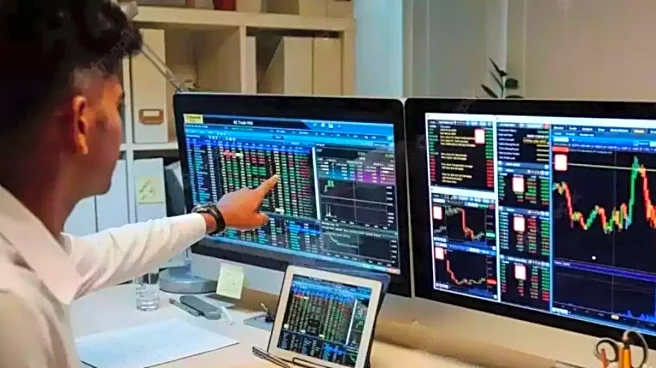What is the story about?
Oil steadied after falling to five-month low, as investors weighed an expected supply glut against the fallout of escalating US-China trade tensions.
West Texas Intermediate traded near $59 a barrel after sliding to the lowest since May on Tuesday, while Brent closed near $62.
The International Energy Agency on Tuesday increased its forecast for an unprecedented oversupply of oil for 2026. Worldwide crude supplies will exceed demand by almost 4 million barrels a day next year, a record overhang in annual terms, the agency said.
Meanwhile, investors are bracing for the latest tit-for-tat retaliation between the world’s two biggest economies, as Beijing sanctioned the US units of a South Korean shipping giant. US Trade Representative Jamieson Greer predicted that heightened tensions with China over export controls would ease, following the latest talks between their representatives.
Oil posted losses in August and September, and WTI has shed about 18% year-to-date. The decline has been driven by growing concerns that global supply will run ahead of demand, with many Wall Street banks forecasting futures will revisit the $50s-a-barrel range.
Also Read: Asian stocks gain as rate cut bets outweigh trade angst
West Texas Intermediate traded near $59 a barrel after sliding to the lowest since May on Tuesday, while Brent closed near $62.
The International Energy Agency on Tuesday increased its forecast for an unprecedented oversupply of oil for 2026. Worldwide crude supplies will exceed demand by almost 4 million barrels a day next year, a record overhang in annual terms, the agency said.
Meanwhile, investors are bracing for the latest tit-for-tat retaliation between the world’s two biggest economies, as Beijing sanctioned the US units of a South Korean shipping giant. US Trade Representative Jamieson Greer predicted that heightened tensions with China over export controls would ease, following the latest talks between their representatives.
Oil posted losses in August and September, and WTI has shed about 18% year-to-date. The decline has been driven by growing concerns that global supply will run ahead of demand, with many Wall Street banks forecasting futures will revisit the $50s-a-barrel range.
Also Read: Asian stocks gain as rate cut bets outweigh trade angst
Do you find this article useful?
/images/ppid_59c68470-image-17604900466556987.webp)

/images/ppid_59c68470-image-176034763190949204.webp)
/images/ppid_59c68470-image-176025004322218179.webp)
/images/ppid_59c68470-image-176033753190398728.webp)
/images/ppid_59c68470-image-176049019844896742.webp)
/images/ppid_59c68470-image-176049008147639933.webp)
/images/ppid_59c68470-image-176044031079265953.webp)


/images/ppid_59c68470-image-176031756133916893.webp)
/images/ppid_59c68470-image-176033506090152815.webp)
/images/ppid_59c68470-image-176037261209457573.webp)
/images/ppid_59c68470-image-1760360037484804.webp)
/images/ppid_59c68470-image-176024253614771346.webp)